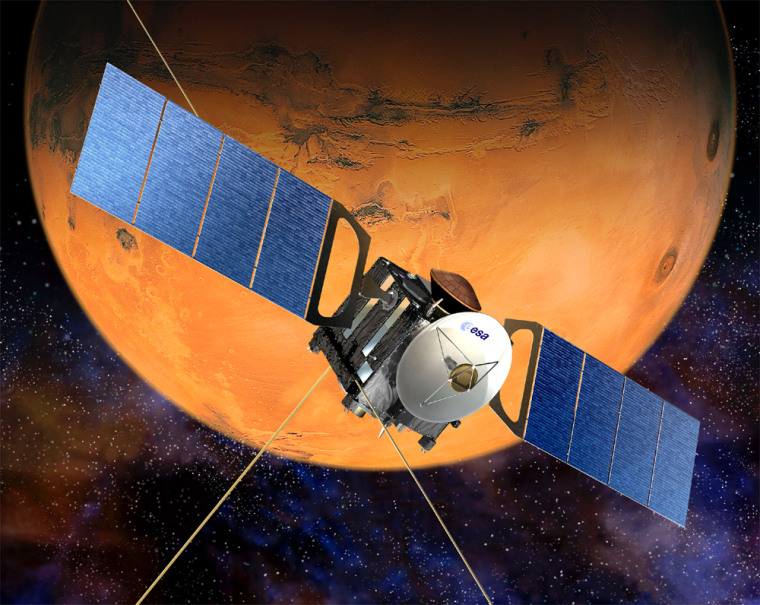The British government said Monday it remained committed to the search for life on Mars despite five days of silence from Beagle 2, the compact British-built lander that should have touched down on the planet Christmas Day.
Mission scientists said they had not given up hope of making contact with the probe but acknowledged there was a chance it had tumbled down a crater on the rocky Martian surface.
“When we were choosing this site in the first place we avoided all the obvious craters we could see,” said chief Beagle scientist Colin Pillinger. “But you can’t avoid every crater on Mars.”
Scientists have received no transmissions from Beagle, which was supposed to land last Thursday after separating from the European Space Agency’s Mars Express orbiter.
NASA’s orbiting Mars Odyssey has passed five times over the spot where scientists hope Beagle landed, most recently on Monday morning, without picking up a signal. Odyssey will try again early Tuesday.
Powerful radio telescopes at Jodrell Bank Observatory in England and Stanford University in California also have failed to detect the craft’s distinctive call sign, composed by the British band Blur, or even a less musical carrier tone.
“While we’re disappointed that things have not gone according to plan, we are determined that the search should go on, both the search to make contact with Beagle 2 and also to answer the long-term question about whether there is life on Mars,” said Britain’s science minister, Lord Sainsbury.
“Long term, we need to be working with the European Space Agency to ensure that in some form there is a Beagle 3,” he added.
'Incredibly unlucky situation'
Shaped like an oversized pocket watch and named for the ship that took naturalist Charles Darwin on his 19th-century voyage of discovery, the 143-pound (65-kilogram) Beagle was supposed to unfold its solar panels and transmit a signal within hours of landing on Mars.
Pillinger said Monday that mission scientists had received a new, detailed picture of the area where they believe the Beagle has landed. The image shows a half-mile-wide (kilometer-wide) crater at the center of the 44-mile-by-6-mile (70-by-10-kilometer) target area near the Martian equator. Pillinger said it was possible, although unlikely, that the Beagle was unable to communicate because it had landed in the crater.
“This would be an incredibly unlucky situation,” he said.
Mission manager Mark Sims told a news conference that neither the Martian weather nor trouble with the hardware of the Beagle’s clock appeared to be the source of the problem.
But Sims said a problem with the clock’s software was still possible. The team planned to send the clock a reset command Wednesday. Trouble with the clock could confuse the timing of Beagle’s planned transmissions.
“We’re working on the assumption that Beagle 2 is on the surface of Mars and for some reason is failing to communicate with us,” Sims said.
Waiting for the mother ship
Project leaders say the Beagle’s mother ship, Mars Express, will offer the best hope of contact when it enters a lower orbit of the planet Jan. 4.

On Tuesday, European Space Agency scientists at mission control in Darmstadt, Germany, will fire Mars Express’ engine in an attempt to shift its orbit from a high one around the equator to a lower polar orbit that will let it establish contact with the probe.
Mars Express will orbit for at least one Martian year — 687 Earth days — surveying the surface with a high-resolution camera and using powerful radar to look for underground water.
Mars Express was designed to beam back data gathered by Beagle, and mission scientists said its communications were specifically set up to hear the probe’s transmissions.
Scientists believe Mars once had water and appropriate conditions for life but lost it billions of years ago, possibly after being hit by asteroids. It is believed that water might still exist on Mars as underground ice.
Of 34 unmanned American, Soviet and Russian missions to Mars since 1960, two-thirds have ended in failure.
NASA plans to land identical six-wheeled robots, Spirit and Opportunity, on Mars on Jan. 3 and just after midnight ET on Jan. 25.
